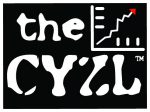
*10 Minute Read*
The IPOs of Lyft and Uber earlier this year have brought a lot of press to ride-sharing companies. After almost a decade in business, there are also reports of strategic changes to finally attain profitability. Billion-dollar quarterly losses and flattening growth is putting the share-holder heat on these companies. They are being pressured to stop supplementing the passenger’s rides. They are expected to operate a stand-alone business that can show positive earnings growth. And while the press and techies are excited about the concept of a self-driving car, it is dubious that this business strategy can withstand scrutiny.
The Beginning of a Financial Problem
The two major ways to get towards profitability are to raise fares or lower driver earnings. It’s a classic business strategy to profitability: you raise prices and/or cut costs. The first is anathema to riders and is likely to scare them away to the competitors. The low price is the reason these companies were successful in the first place. It’s just too dog-gone cheap to use this service rather than some other means of transportation! Both companies have tipped their hands in suggesting that there may be an easing of the price wars. It remains to be seen who blinks first. The risk is that if they raise fares too much, people will look for alternatives outside of ride-sharing companies.
“Cost-driver” Factors
The second business strategy, is lowering driver earnings by capturing a higher percentage of the fare for the company. Until an alternative driving method can be found, this is bound to create problems. I have a friend who drives for one of the ride-sharing companies and has seen a radical shift in how he is receiving his fare. He no longer receives a percentage of the fare. Instead, he receives a flat “rate card”, based on time and mileage, regardless of rush hour “surge” pricing. Not a lot of up-side opportunities to make a reasonable day’s earnings as it used to be.
Messing with the Business Model
This model is great for the company, but bad for the driver. Removing reliable weekly trip-count bonuses and an unfavorable change in the rate card time/mileage formula and, well, you can see where this is going. The business strategy becomes even more harrowing over time. Driver turn-over will increase and the companies will be struggling to back-fill as well as try to grow with new recruits.
Technology to the Rescue?
Which brings us to the question of autonomous vehicles (AVs) coming to your neighborhood. It’s always been speculated that these self-driving cars bring the opportunity for the ride-sharing companies to achieve profitability. They simply have more control over their biggest cost: the driver. As AVs don’t have a quitting time, it also makes them easier to manage. There isn’t a requirement for driver support infrastructure. They can be deployed to areas that require more drivers. They won’t balk at a rider who wants to be taken to Stockton from San Francisco. Let’s look at some of the items that will have to be taken into account in order for this to be even a quasi-reasonable business strategy.
Autonomous Vehicle Cost
First of all, there’s the autonomous vehicle itself. There are a number of “types” of AVs, and their “level” of autonomy, ranging from L1 to L5 (L5 being the most autonomous). Most are in the L3 range right now, requiring extensive oversight (and regulation). Making a few assumptions as to the car models and size, it’s safe to say these ride-sharing companies want to capture every available ride (see: stupid-cheap fares). The vehicles will probably be something that can sit 5-6 people (if not more). It’s likely to be one of the SUVs that are currently being used in testing (like the Volvo XC90). In 2019, the XC90 base price sits somewhere around $48,000.
Enter LiDAR
Now add in the LiDAR technology (high-speed and low-speed) and other ancillary sensors on top of the cost of the vehicle. This vehicle is suddenly pushing close to, if not above, $100,000 PER VEHICLE. LIDAR technology is in its early phase and will come down in price. Newer versions will arrive and economies of scale will drive down the cost on a per-unit basis. But that is in the future and the recent cost of high-speed LiDAR system alone is in the $80,000 range (there are multiple LiDARs in each car).
AV Usage Example from Real-world Data
So now we have the $100K+ priced AV. What will it take to run it? A cursory check on the Volvo website shows the XC90 has an 18.8 gal tank and gets around 25MPG (blended). This calculates to a max range of 470 miles (approx.). In the Bay Area, my friend drives around 7-8 hours a day and averages approx. 200 miles driving (some days more, some days less). Since ride-sharing companies will want to maximize their sunk costs of the vehicle, they will want them to be driving around 7/24 if possible (best case). Let’s assume they are successful in utilizing AVs 22 hours daily.
Costs of and Earnings Made from Using a Self-driving Car
Friend drives 8 hours and 200 miles, or 25 miles/hr. AV drives 22 hours. So:
22 hours @ 25miles/hr is 550 miles a day.
MPG is 25, so AV will use 22 gallons/day, requiring 1 refuel. Gas in Bay Area is around $3.70/gal, so:
- 22 gals x $3.70 is $81.40 for daily gas usage.
My friend has been realizing about $170/8 hr shift, so $21.25/hr. Historically, the ride share companies have taken approx 25% of driver’s cut as part of their “platform fee”. So let’s just say $170/.75, so $227/per 8 hours. At 22 hours, the AV will bring in $623/day (exclusive of booking fees, taxes, etc.) in the SF Bay Area.
If the usable life of the XC90 is 100,000 miles (and those are “hard” miles), this vehicle will be good for:
- 100,000 miles / 550 miles per day, or 181 days (basically half a year), and $14,733 in gas expense.
Lifetime Revenue Scenario
Rolled up, 181 days @ $623/day means total revenue derived from a XC90 in the Bay Area is: $113,272. Cost of the AV and gas alone is $100K + $14.7K in gas. Now admittedly, there are a lot of variables here. Certainly, someone could massage other numbers that make things look better. Still, given an SUV AV costs close to, if not greater than $100K, and the total life revenue is $113K, these companies are going to be hard-pressed to make a profit. These numbers don’t include used vehicle resale on the secondary market. They also do not include the insurance costs over the life of the vehicle. Nor do they include the “deadhead” time of moving vehicles to more favorable areas to balance the demand with supply (i.e., Stockton back to the Bay Area).
Other Hidden Factors
While you are thinking about that, think about this: these vehicles are going to have to have someone standing by somewhere to fill the gas tank. At 550 miles/day, the vehicle is going to have to have its oil changed every 6-7 days. It’s going to have to have its tires rotated every 18 days. The AV will also need a wireless mobile 5G device for tracking, complete with monthly wireless bill. There will be the typical wear and tear items that will need to be replaced over the life of the AV. Lastly, with all the french fries and lattes that get spilled daily, who is going to be cleaning these vehicles? Will they be checked after each ride? If so, by whom? Will there be surveillance cameras to determine if it was you who made the mess? How about car washes? Lots of blanks left to be filled.
More Costs Means Less Profit
Then there is the notion of regulatory compliance and consumer hesitancy. Add in the cost of the employee who will have to be sitting in the driver’s seat before all the bugs get worked out. Also consider the fact that there are other car companies that are working on their own autonomous vehicle technology. Since they manufacture their own vehicles, their unit cost will always be less than that of the ride-sharing companies. Any units sold to the ride-sharing companies will have to be sold at a profit. With the decline in sales due to these ride-sharing services, you know car companies will have to keep their profit margins higher. Companies like Lyft and Uber will always be at a price disadvantage, even if they purchase at “fleet” rates. Leasing could be an option, but who will buy the burned-out hulks once they are done?
Back to the Future Business Strategy?
While these numbers look mildly grim, I also am questioning why ride-sharing companies would even pursue their own AV strategy. History shows that companies, such as IBM, who have moved from a “hardware” business focus while pivoting to software and services, are much more profitable. The AV hardware strategy is a regressive one.
A Different Approach
So here’s a radical business strategy idea. The ride-sharing companies, employing a “platform” strategy, would do their share-holders better. The platform can be “leased” by AV manufacturers on a “per seat” basis, with an annual subscription. Recurring revenue models are what most enterprise-level companies are pursuing these days. I see this as a way to save headaches in the future. The top-line revenue won’t be nearly as high. Certainly the profits from that revenue will be much-improved and give these companies the room to pursue other profitable product/service extensions.
__
The CYZL can provide business strategy and growth insight services to help your business grow and thrive. You can get a free 20-minute consultation at our website. More at www.thecyzl.com.


